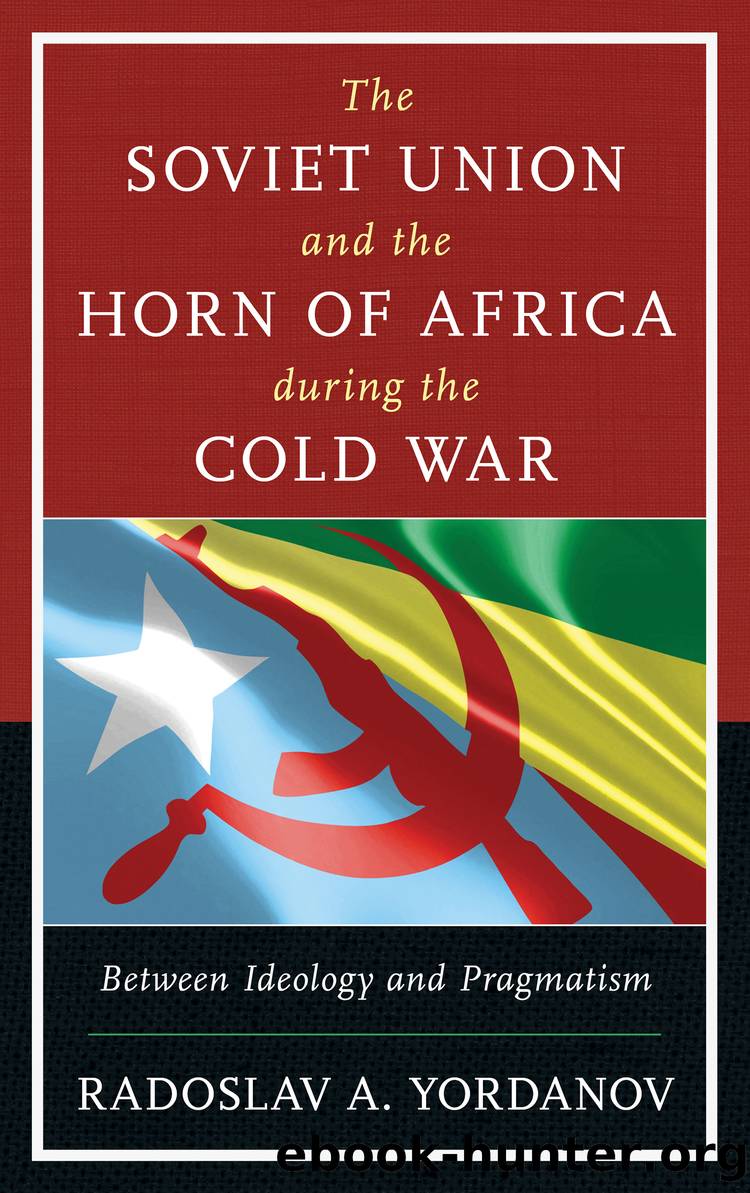The Soviet Union and the Horn of Africa during the Cold War by Yordanov Radoslav A.;

Author:Yordanov, Radoslav A.; [Yordanov, Radoslav A.]
Language: eng
Format: epub
Publisher: Lexington Books
Published: 2016-02-29T17:15:36+00:00
Dergâs Foreign Policy Options: Between Washington and Beijing
The new regimeâs tenuous position during the latter half of 1974 and throughout 1975 further exacerbated its need for obtaining military material quickly and in great quantities. Initially, in line with its nonaligned position, Ethiopia attempted to seek arms from all available sources, including Washington, Beijing, and Moscow. Nevertheless, foreign players hesitated to respond favorably to the Dergâs demands, owing to the unstable situation in the capital and the periphery. A great influx of arms would have further aggravated Ethiopiaâs internal conditions. From the outset, it became clear to Moscow that the military was intent on âshoppingâ for arms from all possible sources. Clearly, the Kremlin was not yet ready to give Addis Ababa the necessary quantities. Relations with Somalia, the precarious situation in Ethiopia, the unclear future of the regime, and its orientation, inhibited the Kremlinâs generosity on the military field.
The lack of certainty regarding the Dergâs foreign arms sources and its simultaneous dealings with East and West engendered much speculation. In the late summer of 1974, Ethiopia began contemplating a reorientation of its foreign policy. The main reason behind that was the U.S. unwillingness to provide Addis Ababa with sufficient levels of military assistance in order for it to withstand the Somali threat. This editorial piece was the first public airing in Ethiopia of the regimeâs option to turn to China or the USSR for military assistance. Throughout 1974, as the military control over civilian government increased, and as the radical element among the armed forces had grown stronger, the possibility that the regime would turn to the left also appeared greater.81
Washington took notice of the Dergâs fondness for denouncing capitalism, but, at first, dismissed it as crowd-pleasing rhetoric. Determined to woo the new regime, the United States chose to increase funding to levels Haile Selassie had âonly been able to fantasize about.â82 In August 1974, Washington delivered at least several dozen M-60 tanks to Ethiopia. The tanks began arriving in Ethiopia about a month after the Podgorny visit to Somalia in early July, when he reportedly brought Siad a gift of seven MiG-21s.83 In the autumn, however, Ethiopia continued to press the American government for additional military assistance. Despite the increased arms deliveries, the tensions between the United States and Ethiopia continued, and the growing manifestation of anti-Americanism in Ethiopia tested Washingtonâs patience.84
In early September, the Ethiopian foreign minister, Zewde Gebre-Selassie, told the British Ambassador that the only foreign policy on which the Derg had formed a strong opinion was that of arms supplies. In PMACâs opinion, for twenty-five years, the Americans had used Ethiopia âas a dumping ground for obsolete material,â and left them in a decidedly inferior position vis-Ã -vis Somalia.85 Accordingly, in the autumn, Aman informed Kissinger in writing that the Soviets had already offered arms to Addis Ababa, stressing that if the Americans were unable to accelerate their military assistance program, the Ethiopians would âshopâ elsewhere. Influential figures in the State Department, however, downplayed the prospects for Moscow to become Addis Ababaâs leading arms supplier.
Download
This site does not store any files on its server. We only index and link to content provided by other sites. Please contact the content providers to delete copyright contents if any and email us, we'll remove relevant links or contents immediately.
Goodbye Paradise(2965)
Men at Arms by Terry Pratchett(2406)
Tobruk by Peter Fitzsimons(2062)
Pirate Alley by Terry McKnight(1909)
Arabs by Eugene Rogan(1836)
Borders by unknow(1786)
Belonging by Unknown(1467)
The Biafra Story by Frederick Forsyth(1323)
It's Our Turn to Eat by Michela Wrong(1301)
Botswana--Culture Smart! by Michael Main(1238)
A Winter in Arabia by Freya Stark(1225)
Gandhi by Ramachandra Guha(1196)
Coffee: From Bean to Barista by Robert W. Thurston(1181)
Livingstone by Tim Jeal(1152)
The Falls by Unknown(1142)
The Source by James A. Michener(1135)
The Shield and The Sword by Ernle Bradford(1101)
Egyptian Mythology A Fascinating Guide to Understanding the Gods, Goddesses, Monsters, and Mortals (Greek Mythology - Norse Mythology - Egyptian Mythology) by Matt Clayton(1088)
Africa: Altered States, Ordinary Miracles by Richard Dowden(1078)
